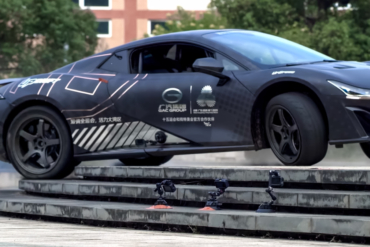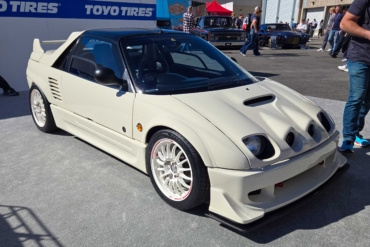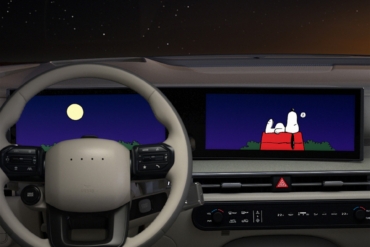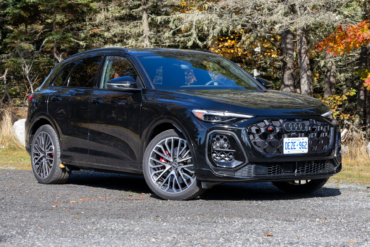U.S. passenger vehicles will need to deliver at least 40 miles per gallon by 2026, according to new federal mandates, which translates to major changes under the hood. But it also raises questions about what sort of vehicles you’ll be able to buy during the second half of this decade.
New fuel economy regulations from the National Highway Traffic Safety Administration (NHTSA), released last Friday, took many observers by surprise. The requirements came in slightly higher than the Biden administration originally proposed last year. They were a big turnaround from the modest 1.5% annual increases the Trump White House had enacted.
Now, for 2024 and 2025 model-year vehicles, automakers will have to boost the mileage of their fleets by 8% each year. For 2026, that jumps to 10%, reaching a Corporate Average Fuel Economy (CAFE) target of 40 mpg.
“When these standards take effect, Americans buying a new vehicle will spend less on gas than they would have if we hadn’t taken this step,” Transportation Secretary Pete Buttigieg said during a media presentation.
Perhaps, but the new CAFE standards raise more questions. What sort of vehicles will be available by the time 2026 rolls around? And how much might these standards impact what Americans have to spend for new vehicles by that point?
Powertrain, Not Vehicle Type Changes
Historically, fuel economy changes leave reasons to be wary. Back in the 1970s and 1980s, the first wave of fuel economy standards forced massive changes upon both automakers and auto buyers. Then, the industry rapidly downsized both its vehicles and its powertrains. By 1985, only a handful of models offered V-8 engines, and compact and subcompact sedans and coupes dominated American highways.
Carla Bailo, the CEO of the Center for Automotive Research (CAR), is confident we won’t see such dramatic changes this time around.
“It’s less about what type of vehicles consumers will buy and more about what will power those vehicles,” she said.
Ongoing research suggests consumers are growing more willing to consider alternative drivetrains. Even now, according to Ed Kim president of automotive marketing firm AutoPacific, “Consumers are turning to technology rather than downsizing to solve the problem of rising fuel prices.”
About 52% of those who responded to a new AutoPacific study said they’d stay with the same type of vehicle they’re now driving, even if gas were to keep climbing as high as a national median of $5.32 a gallon.
Only 25% said that would get them to change vehicle types. But a growing number of motorists are open to drivetrain alternatives.
Among SUV and CUV owners, 47% expressed interest in hybrid or plug-in hybrid technology, while 30% would consider an all-electric SUV or crossover when next shopping for a new vehicle if gas prices keep rising.
Fuel Economy Improvements

Automakers are already moving fast to improve the fuel economy of their most gas-hungry models, including full-size pickups. Toyota no longer offers a V-8 engine with the redesigned 2022 Tundra pickup. But it delivers even better performance and towing capacity — as well as substantially better mileage — with the truck’s new i-Force Max option, delivering as much as 24 mpg on the highway, and 22 combined.
Ford’s CAFE numbers will get a big boost this year with the launch of its new, all-electric F-150 Lightning. And it’s not alone. At least 10 battery-electric pickups are set to debut by mid-decade from established brands that also include GMC, Chevrolet, Ram, Nissan, Toyota, and Kia
And you can toss in EV upstarts such as Rivian, Atlis, and Tesla as well.

And initial consumer response took the industry by surprise. Ford has now twice doubled the capacity of its Lightning plant in Dearborn, Michigan, and plans to open an entirely new EV truck manufacturing complex near Memphis — dubbed Blue Oval City — in 2025.
Tesla reportedly has more than 400,000 initial reservations for its Cybertruck.
More EVs
There is no question that automakers will accelerate the rollout of all-electric models. Volvo plans to sell nothing but battery electric vehicles (BEVs) by 2028, and everything else in its portfolio will rely on plug-in hybrid technology by 2026.

Not everyone believes the answer is to go all-electric, however. For its part, Toyota plans a broad “portfolio approach,” according to marketing chief Mike Tripp. This means a mix of conventional and plug-in hybrids, as well as BEVs like the new bZ4X it will start delivering later this year.
“There will be a significantly higher penetration of electrified vehicles,” by 2026, said Sam Abuelsamid, principal auto analyst with Guidehouse Insights. But internal combustion engines won’t vanish entirely.
Stellantis last month unveiled its new Hurricane powerplant, a turbo V-6 that will replace engines like the iconic Hemi V-8 while delivering substantially better mileage.
But Abuelsamid said to expect a sizable majority of the new products available in 2026 to use some form of battery boost.
More Expensive Vehicles

All of this raises the question of cost. Even where manufacturers stick to conventional gas or diesel drive, you can expect to pay more for a new vehicle come 2026. How much is a matter of debate.
When the Obama administration ordered a sharp increase in mileage a decade ago, the Center for Automotive Research warned that could add another $10,000 to the cost of the typical vehicle.
Fortunately, CAR CEO Bailo says that “the cost has come down substantially,” as new battery-based technologies get into high-volume production.
If anything, the cost of BEVs is likely to decline as batteries get cheaper and more powerful. And by mid-decade, Bailo said there will be “parity” between all-electric and gas-powered vehicles.
Automakers Support CAFE Standards
In something of a surprise, automakers expressed near-unanimous support for the new CAFE standards. If anything, manufacturers were moving in that direction despite the Trump administration’s short-lived effort to roll back mileage regulations, Abuelsamid said.

It’s one thing to accept those standards, another for the industry to meet them. Many automakers fell short in recent years, notably full-line manufacturers like General Motors, Ford, and Stellantis which are heavily dependent upon sales of big pickups and SUVs.
They’ve had to pay substantial fines for missing their CAFE targets, but the cost of doing so is going way, way up. Days before it announced the new mileage rules, the NHTSA said the fines would nearly triple.
For a manufacturer that sells a million vehicles annually and misses the target by just 1 mpg, the fine would jump from a total last year of $55 million to $140 million for the 2022 model year — and again rise to $150 million in 2023.
With its gas-hungry Ram and Jeep brands, Stellantis estimated the increased penalties could come to $572 million this year alone. And the industry, overall, may face $1 billion in fines.
Those are the sort of numbers that automakers can’t ignore – which is precisely what the Biden administration intended. The increase in the Corporate Average Fuel Economy standards won’t be easy to meet, but the alternative will make it too painful to ignore.







